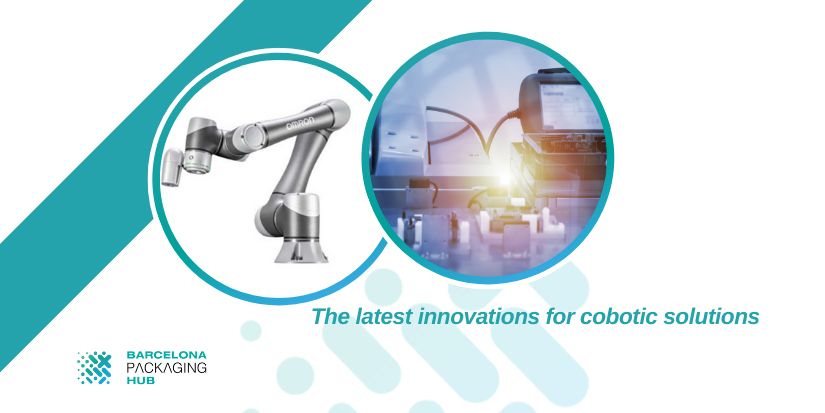In the following article we analyze the progress of the second generation of collaborative robots (cobots). In the past, cobots had some limitations, because they could only handle light products. Also, its programming could be a challenge for some users.
The second generation of cobots: higher performance and flexibility
As integrators, we have been working to design solutions that meet our customers’ needs. The second generation of cobots comes with more features, such as longer range, higher payload and improved safety.
One of the main advantages of cobots is their flexibility. Since they are easily programmable not only at the start of the project, but also during production, they are ideal for companies that require quick adaptation to changing needs.
When designing collaborative robotics projects, it is important to take into account its flexibility, as Santy Witarsa, CEO of Xolertic, points out, “when designing the project, we need to understand the flexibility of the cobot to be able to design different scenarios for our customers.” In this regard, we work closely with our customers to understand their specific needs and design cobot applications that meet those needs.
Despite the many advantages of collaborative robotics, we understand that some companies are hesitant to adopt this technology. Many of them are not familiar with the programming and operation of these machines. However, we have found that cobots can be used for a wide variety of applications, not only for palletizing, but also for backing boxes, preparing proofs, organizing flows and feeding carton machines, among others.
Ensuring safety in industrial robotics
As industrial robots are increasingly present in manufacturing processes, ensuring their safety has become a top priority. This is where OMRON, a technology partner of the Barcelona Packaging Hub, has created a department called OMRON Safety Services in Europe.
Cristian Gago, Strategic Markets Team Leader de OMRON, afirma que: “No sólo ofrecemos una caja, ofrecemos una caja más servicio”. Detailed analysis of the cobot, its grippers and the application environment must be performed at the beginning of the project to ensure its success. This is a critical step that both the system integrator and OMRON must take together to define aspects such as the robot gripper, the distance between the machines and how the operator can safely interact with the cobot.
We invite you to view the full webinar on the latest innovations in collaborative robotics solutions.
Revolutionizing palletizing with intelligent solutions
Many companies are faced with the challenge of palletizing different references and generating mixed pallets for their shipments. In order to face this problem, nowadays there are softwares that allow us to combine palletizing, which allows us to develop different types of solutions.
In this context, we understand the complexity of palletizing different SKUs, but we are working with integrators to offer smart solutions to our customers. These integrated solutions include safety, servo, mechatronics and control, ensuring that the process is efficient and safe.
Different applications of collaborative robotics
We have explored the various applications of cobots in industry. Traditionally, cobots have been used for palletizing, but thanks to technological advances, they can now perform more complex tasks, such as case packing. However, the lack of flexibility in cobot design remains a major concern for our customers, as modifying an existing prototype can be costly.
To address this challenge, we have been working with our technology partners to develop solutions that offer greater flexibility. One such solution is OMRON’s MoMa mobile manipulator, which combines mobile robots with an additional arm. This solution has been especially useful for tasks such as collecting samples from different lines, which could be time-consuming for quality personnel.
Another challenge raised by our customers is the need for traceability and the possibility of making mixed pallets. We have been able to address this concern by integrating the cobot with a vision system that allows for greater precision and accuracy in product selection. The cobot is managed by our PLC and communicates with our SQL database to manage different pallets with different products, providing greater traceability.
But there is another challenge facing companies, especially in the food and pharmaceutical industries. Manufacturers need to produce sustainable, safe and high quality products. A leak in a gear unit can become a source of contamination and be transmitted to other production areas.
For that reason, OMRON our technology partner has recently launched the Cobot Food Grase Grease, with lubricants specially formulated to meet the stringent requirements of the food industry. Food grade grease is not only tasteless and odorless, it is also resistant to plastics and other common packaging materials. In addition, OMRON’s FGG line of collaborative robots includes a variety of models to ensure the right reach and payload for different applications.
In conclusion, the increase in small batch production has called for more flexible solutions, and collaborative robotics offers an excellent option. With integrated vision systems, labeling capabilities and efficient movements, cobots provide a safer and more productive way to handle repetitive tasks. The key to success lies in the integration of safety measures, and carton feeders have become one of the most sought-after applications after intelligent palletizing, especially for machine tending. By partnering with systems integrators, we are able to offer a variety of proposals to meet the unique needs of our customers.


